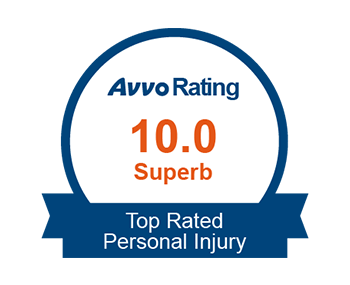Navigating the complexities of insurance law can be daunting, particularly in a state as dynamic as New York. One of the most essential components of New York’s insurance landscape is the no-fault insurance system. Understanding this system is crucial for residents and those driving within the state to ensure they are adequately protected and compliant with the law. At Andrews, Bernstein & Maranto, PLLC, we are dedicated to providing clarity on this topic and helping individuals navigate their legal needs efficiently.
What is No-Fault Insurance?
New York is a no-fault state, which means that drivers involved in a car accident must turn to their own insurance company to cover medical expenses and other losses, regardless of who was at fault. This system is designed to expedite the compensation process and reduce the burden on the court system by minimizing litigation over minor accidents. However, the no-fault system has its own set of rules and limitations that can be complex and sometimes confusing.
No-fault insurance in New York, officially known as Personal Injury Protection (PIP), provides coverage for medical expenses, lost wages, and other necessary costs incurred as a result of an automobile accident. The basic coverage includes up to $50,000 per person for these expenses. While this may seem straightforward, understanding the specifics of what is covered and what is not, as well as the procedures for filing a claim, is essential for all drivers.
Medical expenses covered under no-fault insurance are broad, encompassing hospital and doctor bills, prescription medications, necessary medical equipment, and even rehabilitation services. Additionally, PIP covers lost wages if the injuries from the accident prevent the policyholder from working. This compensation is typically calculated at 80% of the individual’s lost earnings, up to a maximum of $2,000 per month for up to three years from the date of the accident. Other reasonable expenses, such as transportation to and from medical appointments, can also be reimbursed under this coverage.
The Benefits and Drawbacks of No-Fault Insurance
One of the key benefits of the no-fault system is the speed at which claims can be processed and paid. In theory, this allows for quicker access to funds needed for medical care and daily living expenses after an accident. However, it is important to note that there are strict deadlines for filing claims under New York’s no-fault law. Typically, the injured party must submit a no-fault application to their insurance company within 30 days of the accident. Failing to meet this deadline can result in a denial of benefits.
Moreover, while no-fault insurance covers a wide range of expenses, it does not compensate for pain and suffering or damages for emotional distress. These types of damages can only be pursued through a separate personal injury lawsuit, which is permissible under certain circumstances. For instance, if an individual sustains a “serious injury” as defined by New York law, they may step outside the no-fault system and seek additional compensation from the at-fault driver. Serious injuries include significant disfigurement, bone fractures, permanent limitation of use of a body organ or member, significant limitation of use of a body function or system, or a medically determined injury or impairment that prevents the individual from performing substantially all of their usual and customary daily activities for at least 90 days during the 180 days immediately following the accident.
The team is very personable, patient and empathetic with their clients. They are upfront with you and will explain the entire process with you, they never lead you to believe otherwise, they tell you like it is and will not sell you a million dollar dream. Trust in Andrews, Bernstein & Maranto, PLLC, they work for you and he looks out for your best interest.” - Jane D.
Challenges and Disputes
In addition to understanding the benefits and limitations of no-fault insurance, it is crucial to be aware of the potential challenges and disputes that may arise. Insurance companies, while responsible for providing timely payments, often scrutinize claims carefully to avoid fraudulent or inflated requests. This can lead to disputes over the necessity or cost of medical treatments, the extent of lost wages, and other compensable expenses. Having accurate and thorough documentation of all accident-related costs and maintaining open communication with healthcare providers and insurers can help mitigate these disputes.
Insurance Interactions
Additionally, the no-fault system interacts with other types of insurance and legal principles in ways that can affect the outcome of a claim. For example, if the accident involves an out-of-state driver, different rules and coverages may apply, potentially complicating the claims process. Similarly, interactions between no-fault insurance and other policies such as health insurance, disability insurance, and workers’ compensation can create complexities that require careful navigation to ensure all available benefits are maximized.
The Importance of Legal Counsel
Given the intricacies of no-fault insurance and the potential for disputes, having knowledgeable legal representation can be invaluable. An attorney who understands the nuances of New York’s insurance laws can provide guidance on the appropriate steps to take after an accident, help with the documentation and filing of claims, and advocate on behalf of the injured party in disputes with insurance companies. Legal counsel can also assist in determining whether an injury meets the threshold for a serious injury claim, thereby opening the door to additional compensation through a personal injury lawsuit.
Common Mistakes After a Car Accident Who Pays to Fix My Car?Related Videos
Advocating for Accident Victims
Understanding no-fault insurance is not only about knowing what is covered but also about being proactive in protecting one’s rights and interests. This includes knowing how to properly document an accident scene, seeking timely medical attention, and keeping detailed records of all related expenses. It also means being aware of the potential for insurance fraud and taking steps to ensure that all claims are legitimate and supported by appropriate evidence.
For those navigating the aftermath of a car accident in New York, the process can be overwhelming, especially when dealing with injuries and the stress of the situation. This is where the support and guidance of a dedicated legal team can make a significant difference. At Andrews, Bernstein & Maranto, PLLC, we are committed to helping our clients understand their rights under the no-fault insurance system and fighting so that they receive the compensation they deserve.
Verdicts & Settlements
If you or a loved one has been injured in a car accident, we encourage you to reach out to us for a consultation. Our experienced attorneys will take the time to listen to your situation, explain your options, and provide the support you need during this challenging time. Navigating no-fault insurance claims can be complex, but you don’t have to do it alone. Let Andrews, Bernstein & Maranto, PLLC, be your advocate and guide so that you receive the benefits and justice you are entitled to under the law. Contact us today to learn more about how we can assist you.













Is there any remedy for having been the victim of an accident, where in my vehicle was totaled; there was no personal physical injury, yet we were thrown back in to debt since we had to replace our close to paid off vehicle? Can we sue the other driver, that was ticketed, to retrieve some of what we have had to take on financially?